A few weeks ago, Christian Kaestner and Stuart Penn had explained to us the work of Framestore on ALIEN: COVENANT. They are back today to tell us about Guy Ritchie’s new film, KING ARTHUR: LEGEND OF THE SWORD.
How did you and Framestore get involved on this show?
Stuart Penn (SP): We were involved from pre-production, with our Art Dept doing a lot of great concept work for it. Jonathan Fawkner (VFX Supervisor) was on set for much of the shoot. I attended the shoot for some sequences, especially those involved with the Nemesis fight including the motion control set ups.
Christian Kaestner (CK): Jonathan, Nick Davis and myself had recently worked on EDGE OF TOMORROW together. Framestore has had a working relationship with Nick since CHARLIE AND THE CHOCOLATE FACTORY, but I think for me personally it was the work on EDGE OF TOMORROW that brought us back together on KING ARTHUR.
How was the collaboration with director Guy Ritchie and VFX Supervisor Nick Davis?
SP: We worked very closely with Nick. Nick’s office was only a few minutes walk from our London office, so Nick would regularly pop round to discuss ideas. It was a very collaborative team effort.
CK: I really enjoyed working with Nick. He places a lot of trust in Framestore. The Camelot valley didn’t quote work out the way it was initially planned; becoming a much more CG-based environment. He was really patient with us as we had to change methodology later in the process.
What was their approaches and expectations about the visual effects?
CK: They wanted the look to be fantastical and magical but in a grounded, gritty way. It was a lot of fun to do the creatures and environments that were on a grand scale, yet everything was grounded in reality. I think we were able to establish a really good look together and they gave us a lot of freedom to go ahead and research how we thought assets should look. We had concept art for most of the assets and environments, but the challenge was getting the concept translated into reality without losing its character and mood.
What are the sequences made by Framestore?
SP: The battle at Camelot with the giant elephants that opens the film. Most of the Camelot establishers throughout the film. The eagle carrying the snake to Camelot, the “baby” snake and Giant Snake in the Throne room. The interiors of the Tower. The fight between Arthur and the Nemesis and the destruction of the tower. There were also a few smaller sequences such as Vortigern lighting the candle with his magic and the snake on the pier with the young Arthur.
How did you split the work amongst you two and between the Framestore offices?
SP: Montreal handled first act – with the giant elephants and developed the Camelot environment used throughout the film. London worked on the third act, developing the Nemesis and Tower interior. London used the Montreal developed Camelot for some shots and Montreal used the London developed Tower for some of its shots. The systems within Framestore allow us to seamlessly share assets between sites.
The opening sequence features a massive battle. How did you approach and previs this sequence?
CK: the Pre-Viz for a this sequence was driven directly by Nick Davis through The Third Floor and Nvizible, meaning we had a pretty good guide when it came to setting up the shots initially. However, later in the project there were new shots and changes to this sequence, which allowed us to pick some of the layout work internally.
Beside the grand environment, there were a lot of elements that needed to go into the opening sequence. Large scale elephants, carrying a wooden fortress with fire, smoke, weapons and digital characters required a quite methodical approach as there was so much interaction between all elements.
For the big opening shots it was crucial that we had locked down the blocking of the camera and composition before we even wanted to start refining our assets. We were quite close up to many of our digital environment, elephants and horses with riders, yet it was a quite wide lens and we see a lot of environment.
Additionally everything had to be destructible which added an additional layer of complexity.
Elephants would sweep riders of their horses, carve trenches into the ground with their trunks, ram into a huge stone viaduct and finally ripping the wooden fortress of their backs.
The task was daunting, the execution was probably one of the most challenging things I have worked on, but the result is stunning and impactful. I’m very pleased how it all turned out.
The mages are using impressive elephants. Can you explain in detail about their design and creation?
CK: It’s very easy to blow the scale on something like this, to close-up on the animal and for the audience to just think it’s a normal elephant. We looked at elephants we’ve worked on in the past, but when we got to the point where we were scaling these elephants up to be 300 ft tall it had a slightly different dynamic to it. We took walk cycles of normal sized elephants and applied the inverse of a methodology that is normally used to work out miniature photography frame rates. We had a maxiture so to say, this conversion gave us a really good starting point for the scale of our creatures.
On top of that, it was a matter of how much skin detail we can put into that larger surface of the elephant. The modelling side of it was quite long and tricky as we had to get all of this detail in such a huge creature.
Can you tell us more about their rigging and textures?
CK: The finer levels of details thad to be added; the patterning of the skin, texture variation at multiple levels, the dirt… It was important to have a really detailed textured object in the frame. They are fantastical creatures but we took reference from the African elephant’s as their ears needed to be big. We really wanted them to have character. Guy wanted them to have war paint which was really cool and allowed us to distinguish them from real elephants anyway. They also had armour and these massive wooden fortresses on the back of the elephants. Making everything move and interact with each other was a great challenge as we needed to keep in mind that we had to render it all at some point.
Usually we would take an approach that allows us to work with proxies and only use the very high resolution model at render stage, but in this case we needed to pay particular attention to which parts of the elephants would be in contact and interact with the wooden fortress or steel armour. So, the rigging was complex and required paying particular attention to simulation requirements, but the result was very successful.
Many destructions happens during this sequence, can you tell us more about this aspect?
CK: The destruction was a fantastic challenge. I think it brought out the children in a lot of the team – everyone loves to blow up things, and on this scale it was as much fun as the challenge was big.
We needed to define a hierarchy of simulations steps. For example for the elephants we needed to simulate the muscle and skin first to interact with its armour and environment, before we could simulate the destruction, which then became the base of effects elements and crowd simulation.
There was no one setup that would have solved all our challenges – so each shot required breaking it down and taking it apart before putting it back together in a methodical and structured approach.
Camelot is a big environment. How did you design and create this location?
CK: The castle itself was so big that we approached it in a lego block kind of way- we didn’t build a massive asset that was unmanageable. We modelled individual sections of the environment and the castle that could be textured and modified individually and at render stage be brought and lit together.
Did you received specific indications and references for Camelot?
CK: Yes, we had detailed blue prints and art work from the art department which was our starting point alongside the partial set builds. From those we did additional research on castles and stone references. Most of the castle references we found in British and Scottish castles but we also found some great texture references in Spain.
The bad guy is the Nemesis. Can you explain in detail about his design and creation?
SP: We did some early tests on the Nemesis character in pre-production and continued to work on it through post. The brief was refined over time but the core was to have a very muscled 8’ tall fighting machine with a shiny helmet. The Framestore Art department worked on the design from the beginning. We shot reference of a bodybuilder to carefully understand the dynamics of someone so muscled. We built a full dynamic muscle system that drove his deformation.
How was his presence on-set simulated?
SP: On the day there was a stunt actor on stilts for Arthur (Charlie Hunnam) to fight with. Even though we didn’t use the stunt performance for the Nemesis animation it gave Charlie something to react dynamically to and to have the fight choreographed.
His cape and weapon are full of FX elements. Can you tell us more about it?
SP: The cape was a cloth simulation that drove a particle simulation for smoke and and ash which in turn drove a fire simulation. The fire sim responded to changes in speed. Light generated by the fire was used to light the rest of the scene, i.e. the smoke from the cape, the Nemesis and the environment. The cape effects were rendered in a few layers with AOVs that gave the compositors the additional flexibility over the fire. The weapon effects were a combination of particle effects and lights with additional effects generated in the comp in Nuke.
The final fight happens in a beautiful dark environment surrounded by water. How did you created this location?
SP: The island the fight takes place on was sculpted based on photo-scans of real rocks from beaches on the Welsh coast. In wide shots where the water was seen crashing against the island, hero water sims were created using our flush fluid solver. For other shots a library of splash and ocean tile sims were generated that could be dressed into the shots. The surrounding mountains were dressed with pyroclastic and smoke & steam plumes. A library of these elements were created and dressed into a base layout and then art directed as needed on a per shot basis.
During this fight, the camera is moving all around with many zooms and slow-mo. How did you handle this challenge?
SP: Most of the footage was shot at high speed. Some of the camera moves were prevised and the camera moves fed into a fast moving robot. The first block of the animation was done in real-time and then the vari-speed retimes were applied so that the animation was physically correct and we knew what retime would need to apply to cloth and FX sims. Multiple takes were jointed together and some joins required a full CG Arthur to take over from the live action.
The Nemesis gets back to his original shape, King Vortigern. How did you created this transformation?
SP: The transformation from Nemesis to Vortigern was covered by smoke and fire sim generated from our cape setup. The plate of Vortigern (Jude Law) was treated to give him a greyer skin tone – closer to that of the Nemesis. Matte painting were projected for the burns on his face.
What was the main challenge on this show and how did you achieve it?
SP: The main challenge was the Nemesis. It required high fidelity muscle systems and allowed us to take our muscle pipeline to new levels. This combined with the fiery cape and vari-speeds made it particularly complicated.
Was there a shot or a sequence that prevented you from sleep?
SP: The transition from the Tower into the stormy world was a very long and complex shot with many different FX simulations.
CK: It was the opening shot, with the huge elephant trunk sweeping the army off their horses and at the end of the battle, the elephant ripping the wooden fortress off their backs.
Both shots were not only long, but also one of most complex simulations we had to do.
What is your best memory on this show?
SP: Working with the best team in Framestore.
CK: The unconditional efforts from the team to get some of these shots right. I’m so pleased with the work that we were able to achieve.
How long did you work on this show?
SP: 2 years.
CK: About 18 months.
What is your VFX shots count?
London: 240.
Montreal: 190.
What is your next project?
SP: Since working on KING ARTHUR I have also completed ALIEN: COVENANT.
CK: I have just completed ALIEN: COVENANT and currently filming MARY POPPINS RETURNS.
A big thanks for your time.
// WANT TO KNOW MORE?
Framestore: Dedicated page about KING ARTHUR: LEGEND OF THE SWORD on Framestore website.
© Vincent Frei – The Art of VFX – 2017



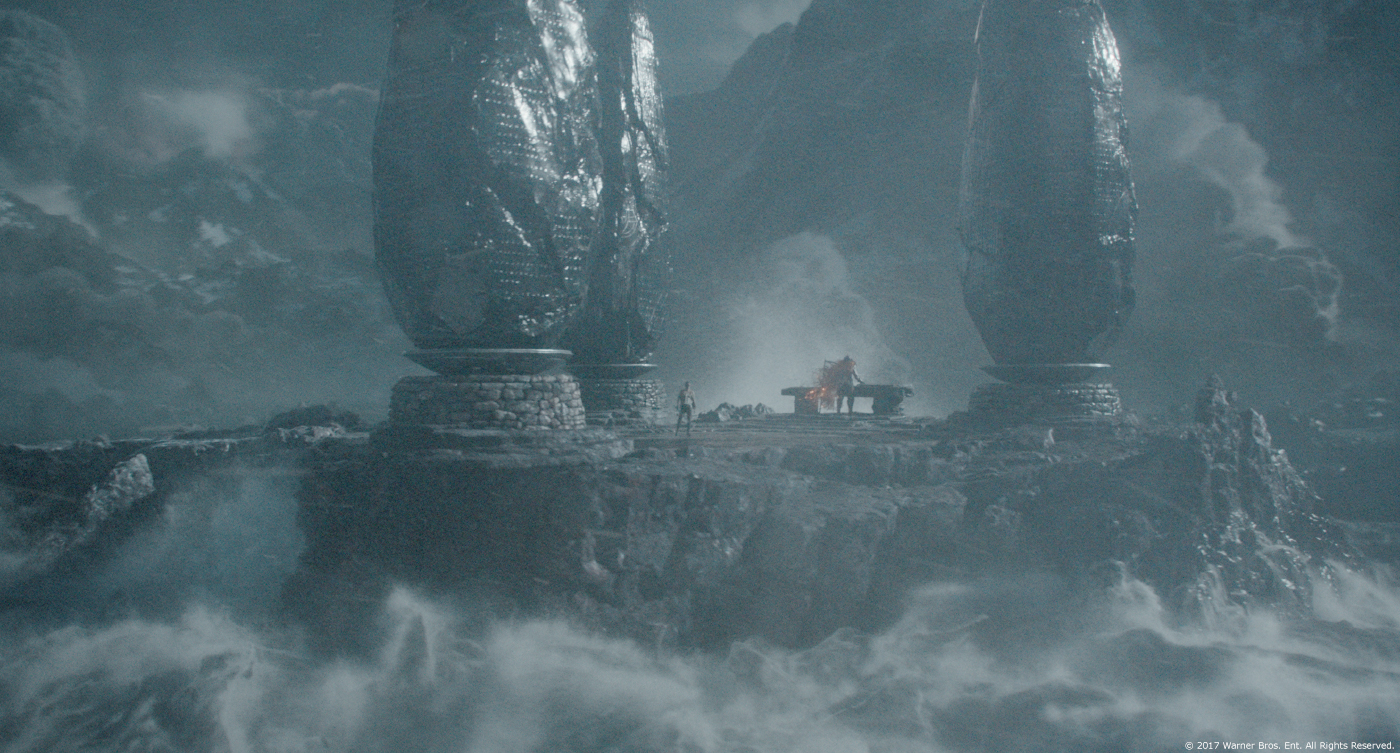
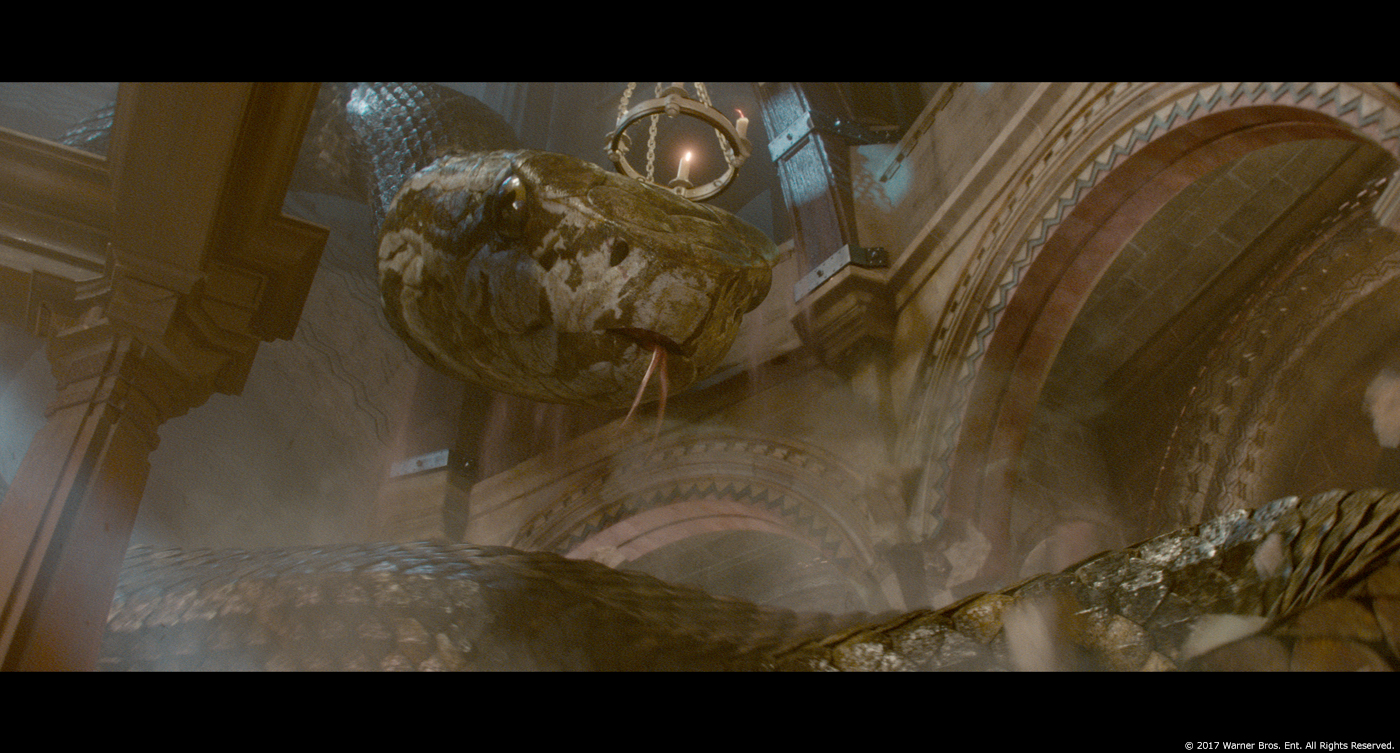
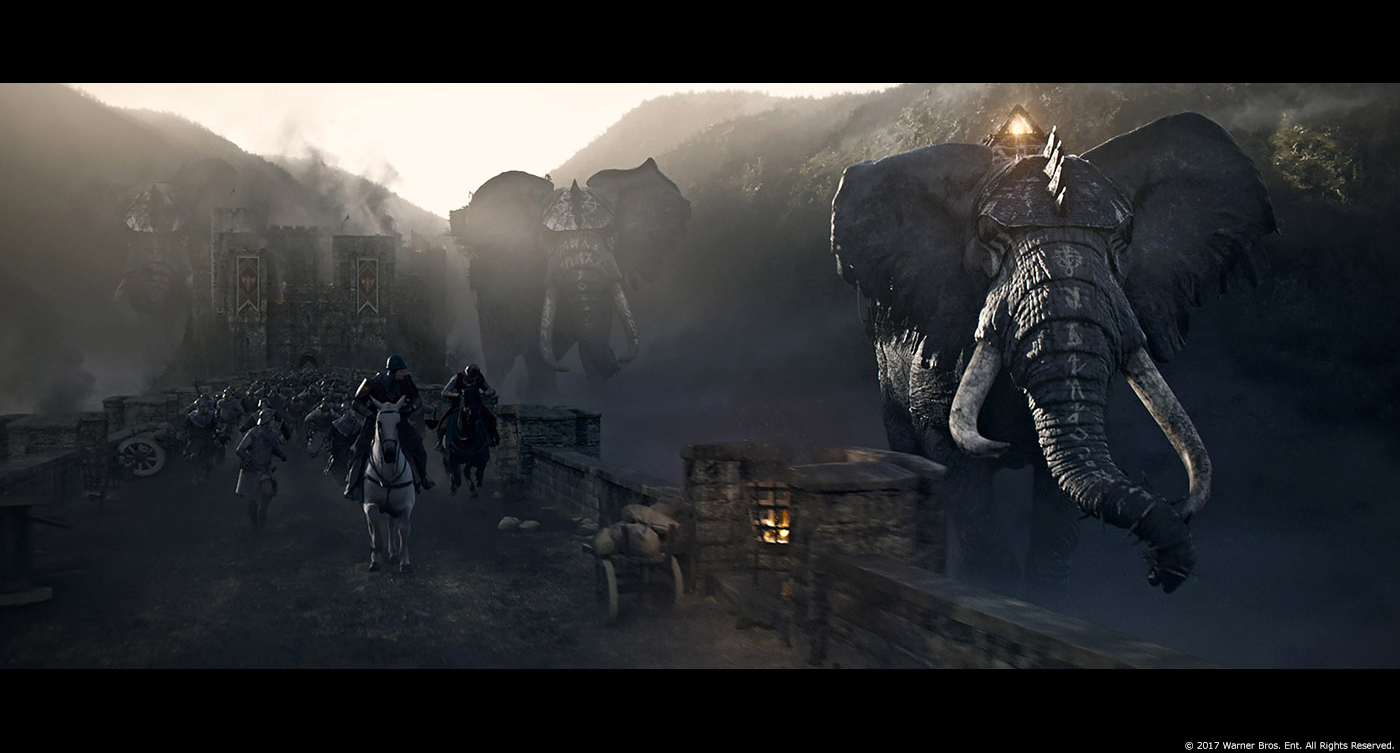
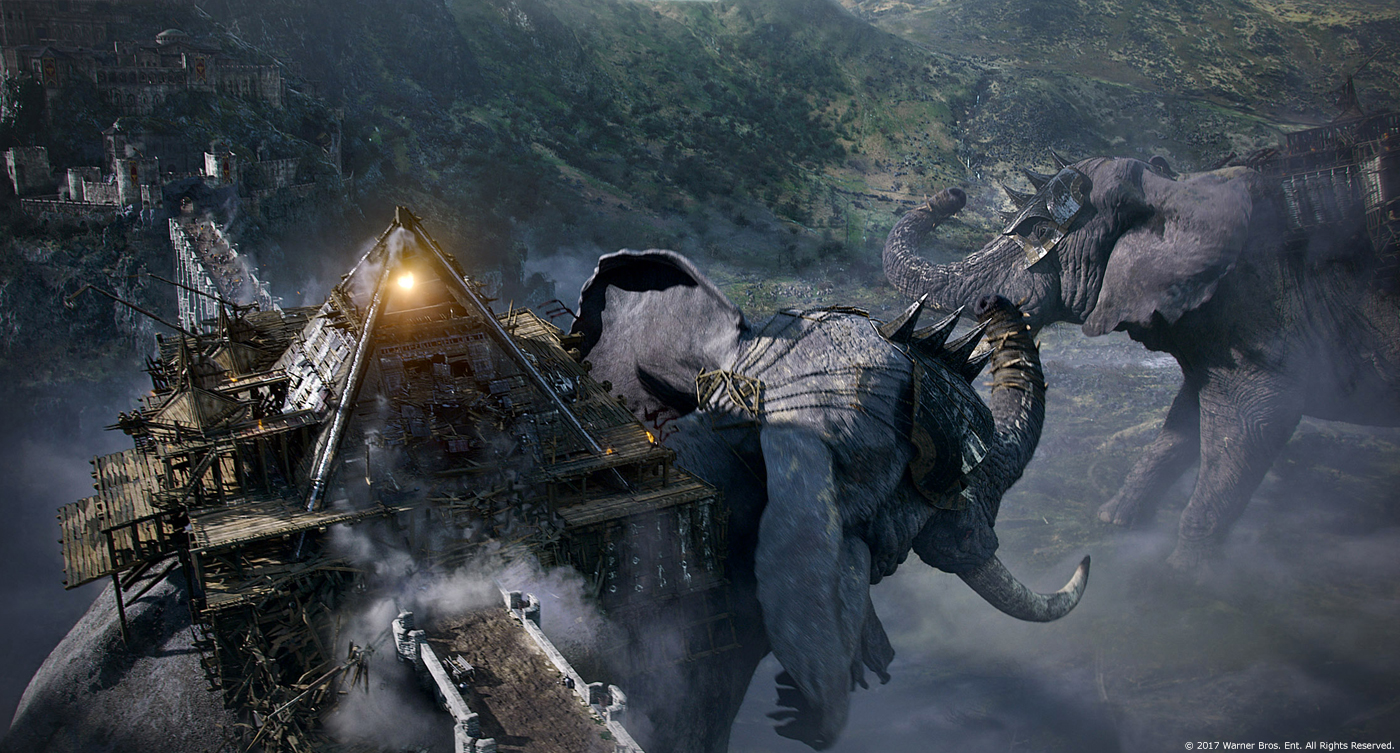
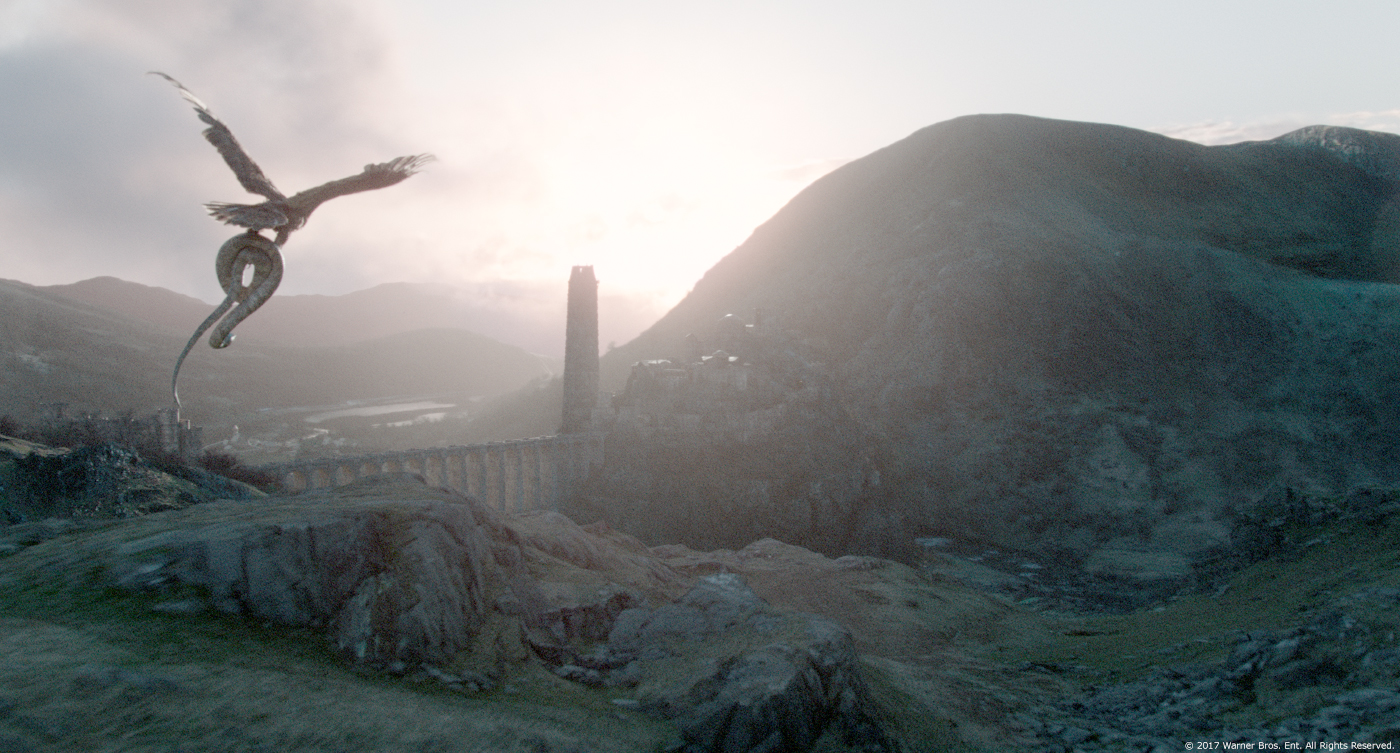
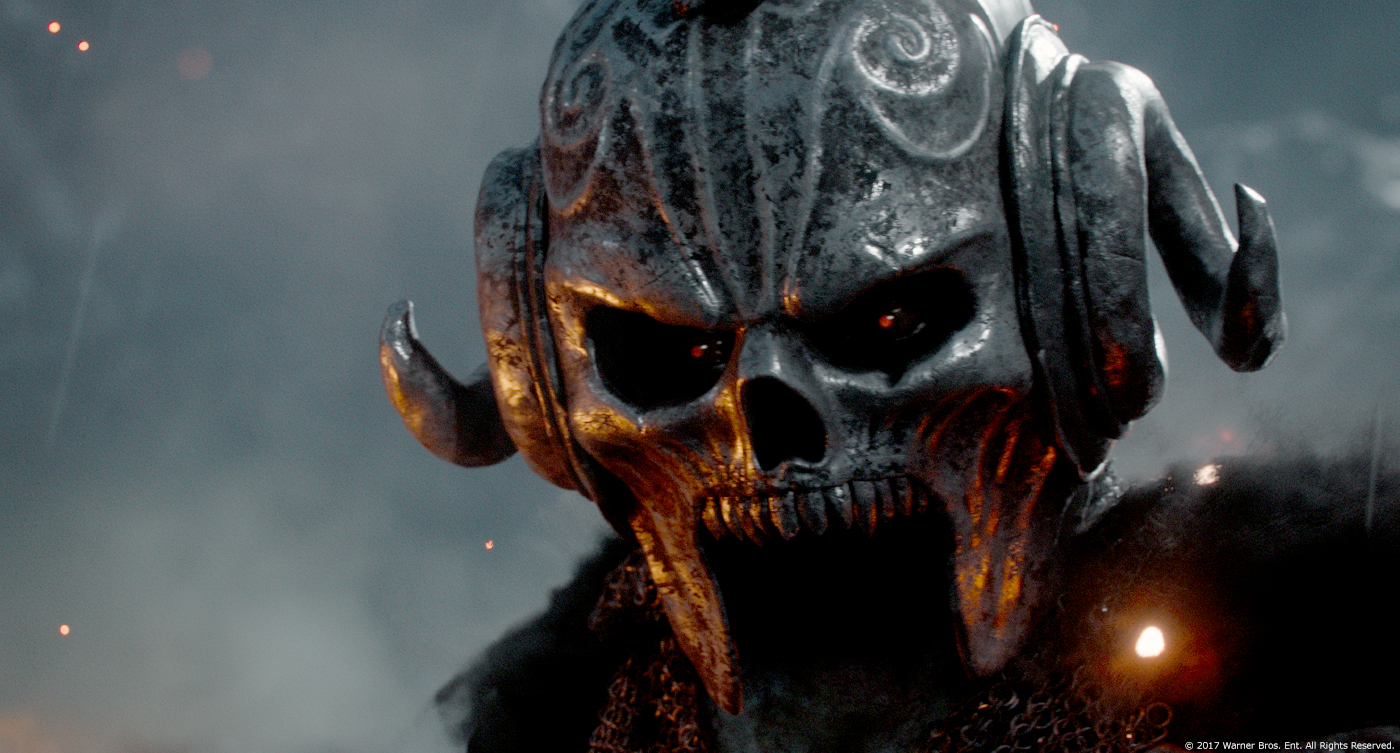
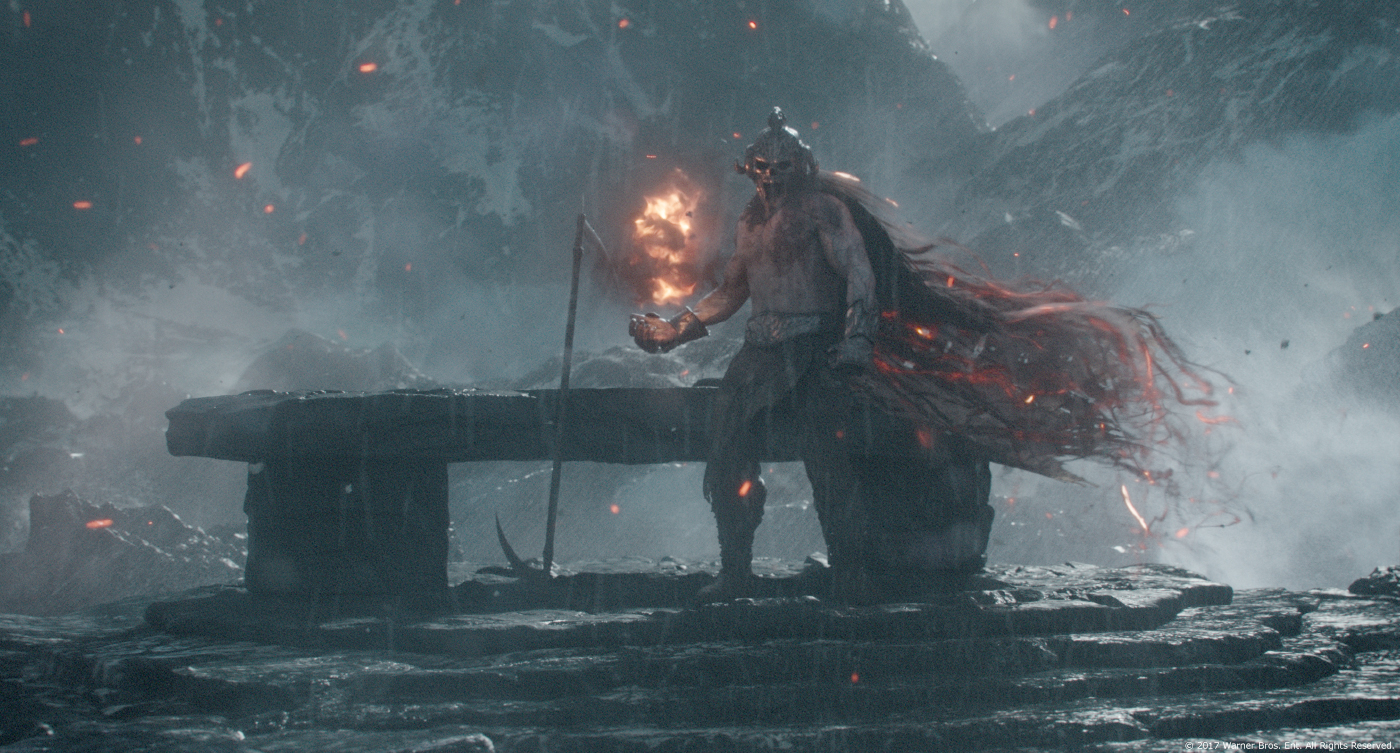
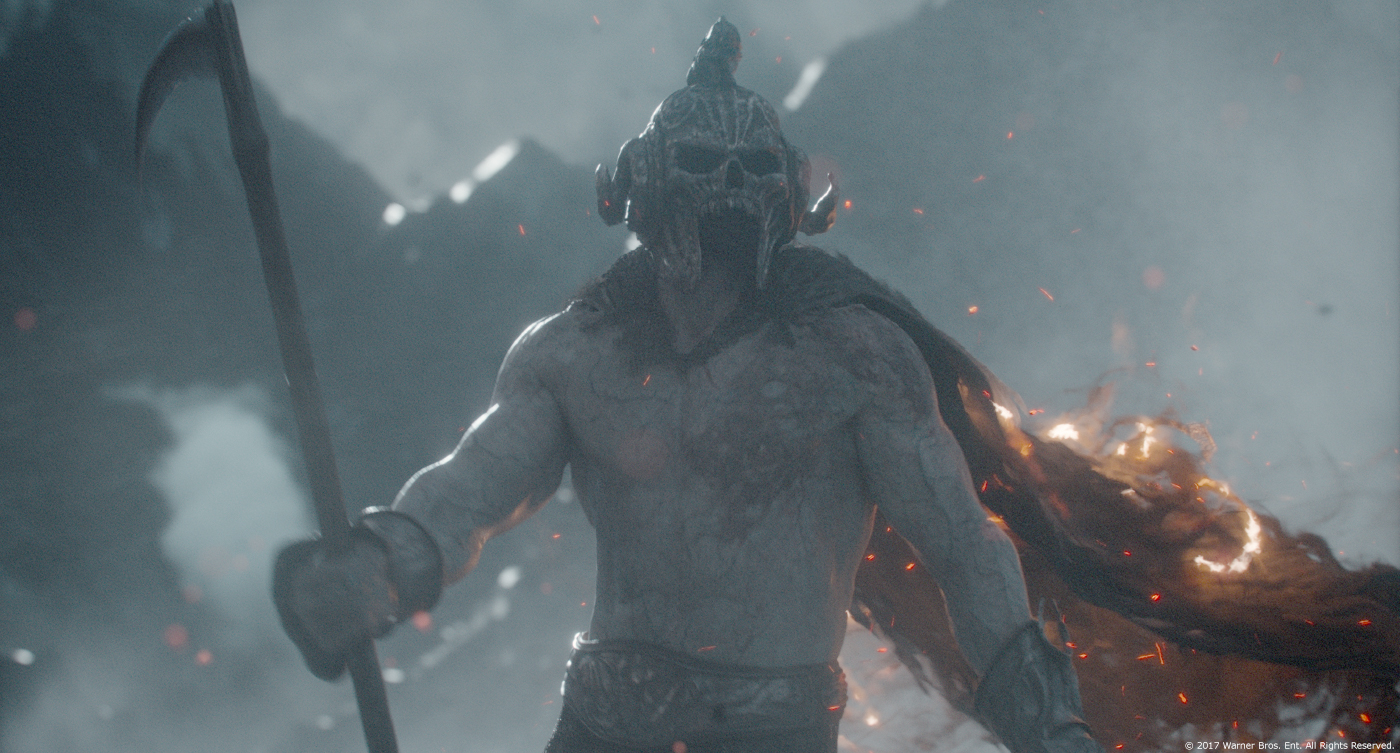
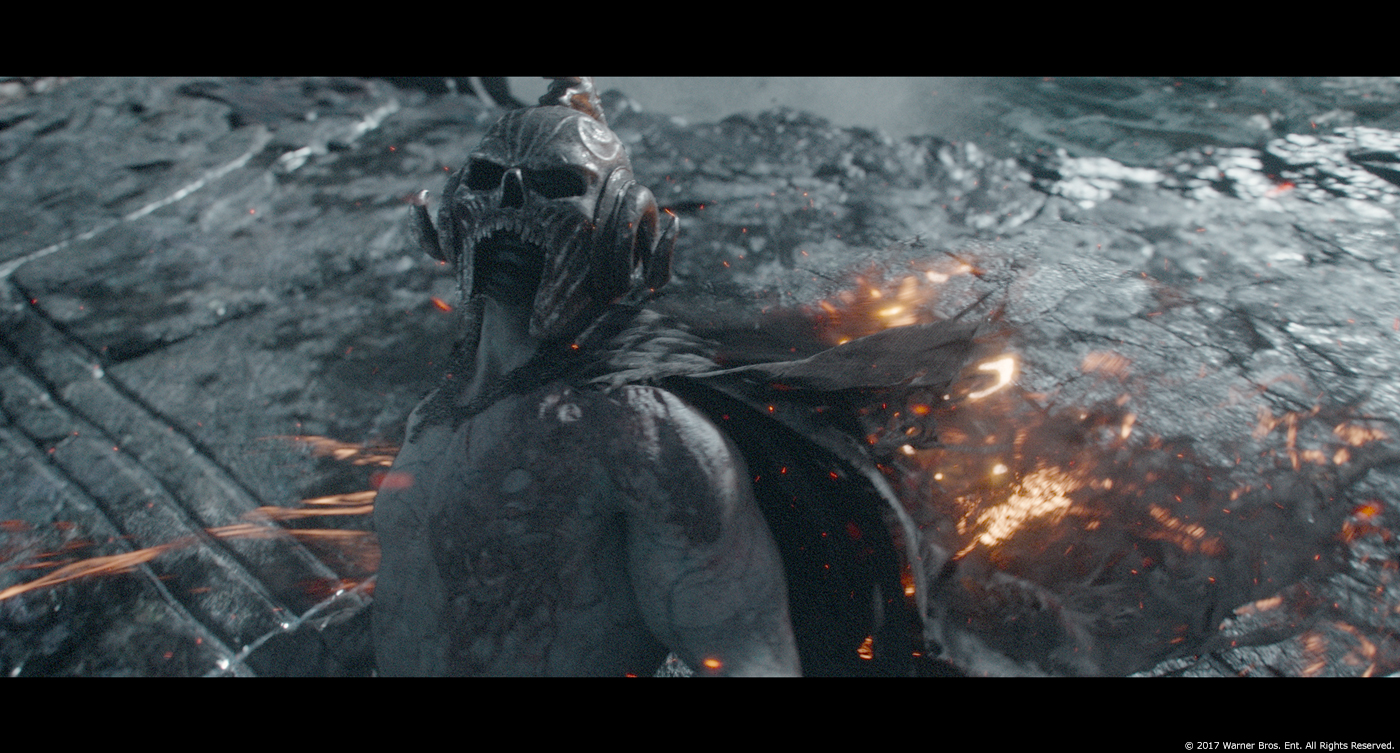
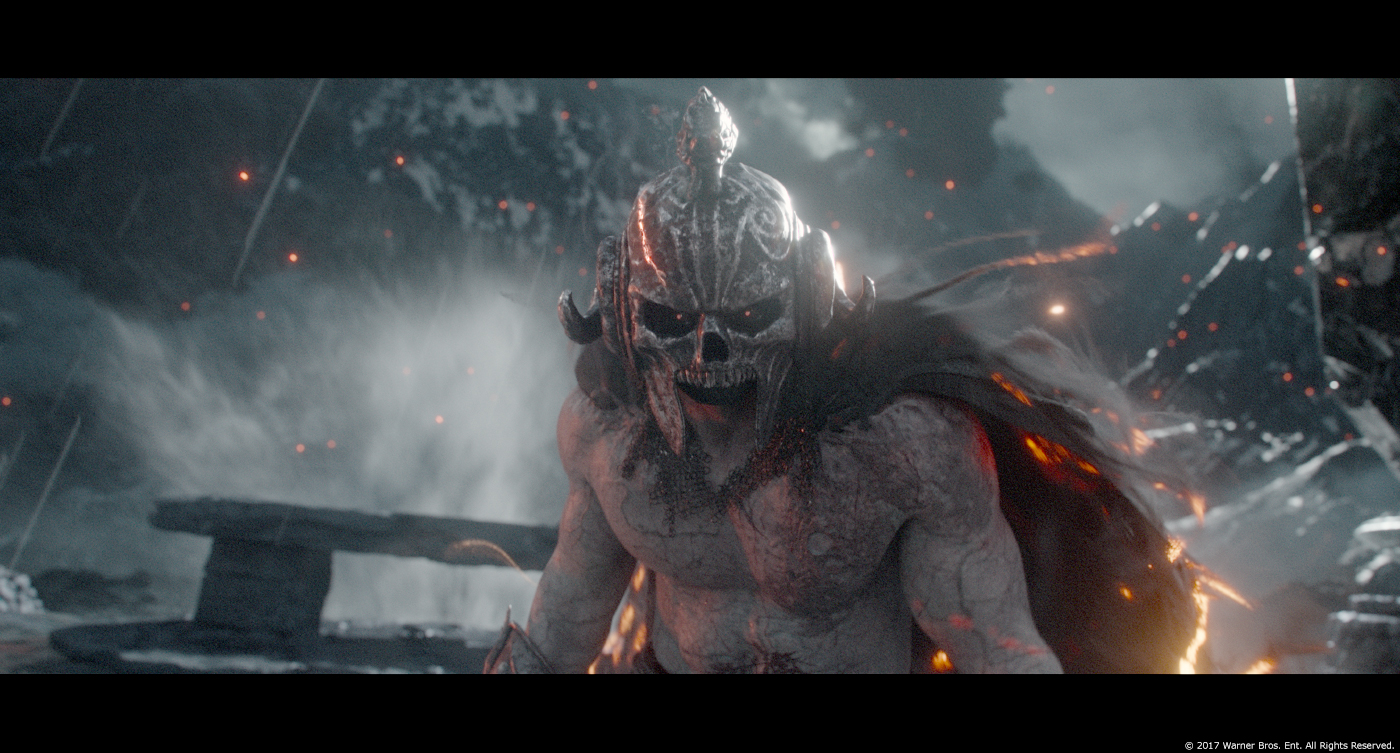




Why do they release VFX behind the scenes photos/videos with the green screen colour corrected to grey these days? It was the same on the Fantastic Beasts blu-ray. That even commented on moving green screens around on flat bed trucks, and it was illustrated with a grey screen on a flat bed truck. Are they trying to pretend they aren’t using green screen?